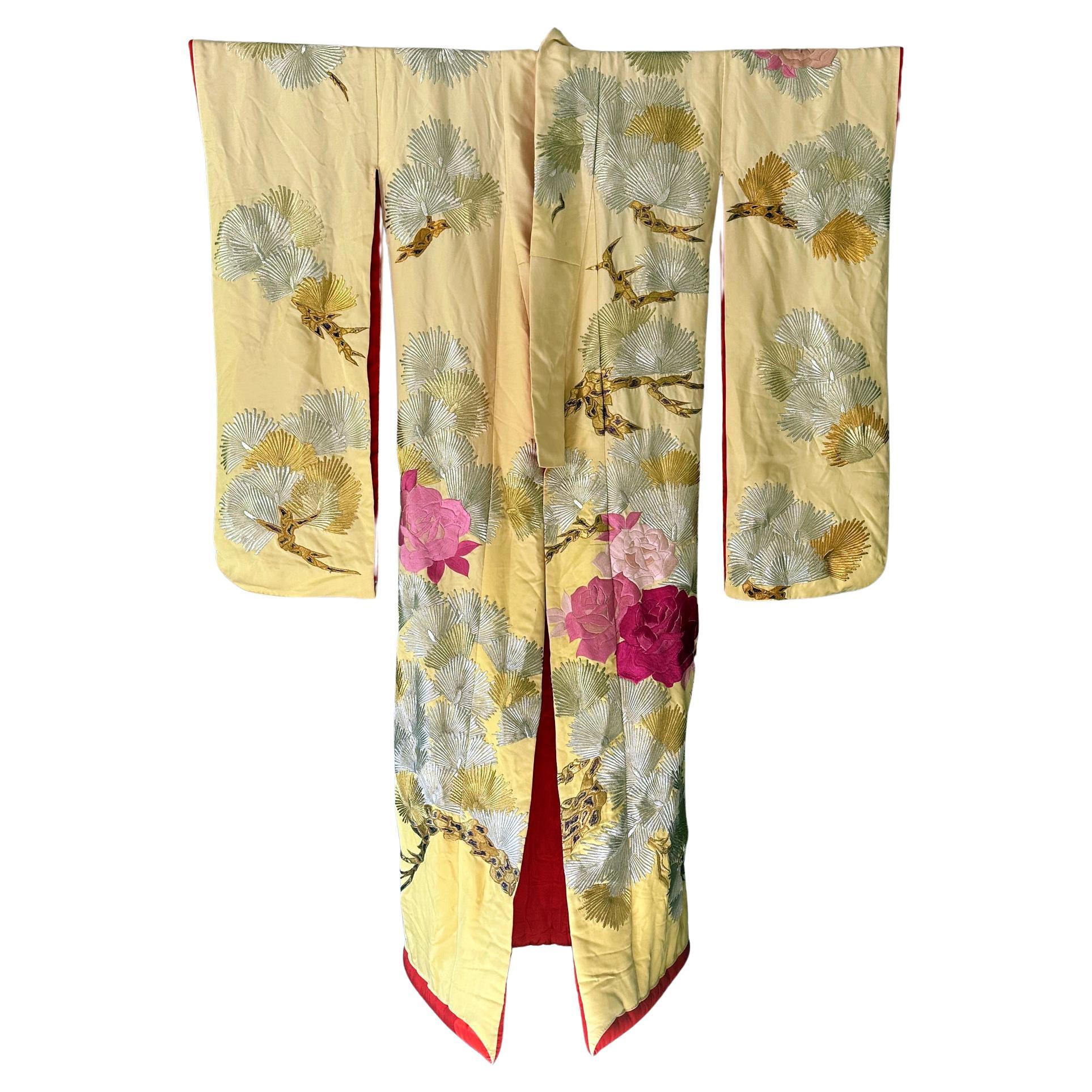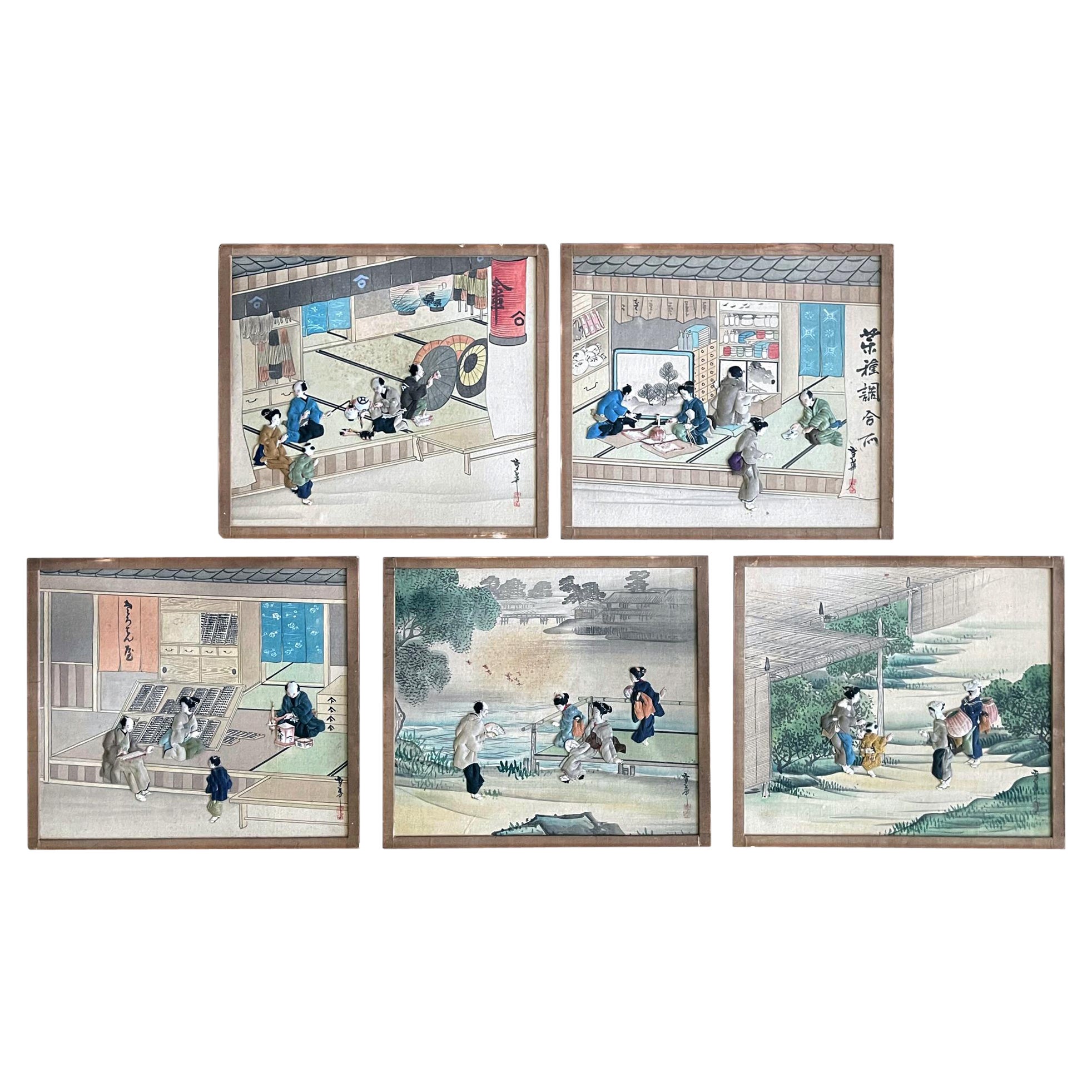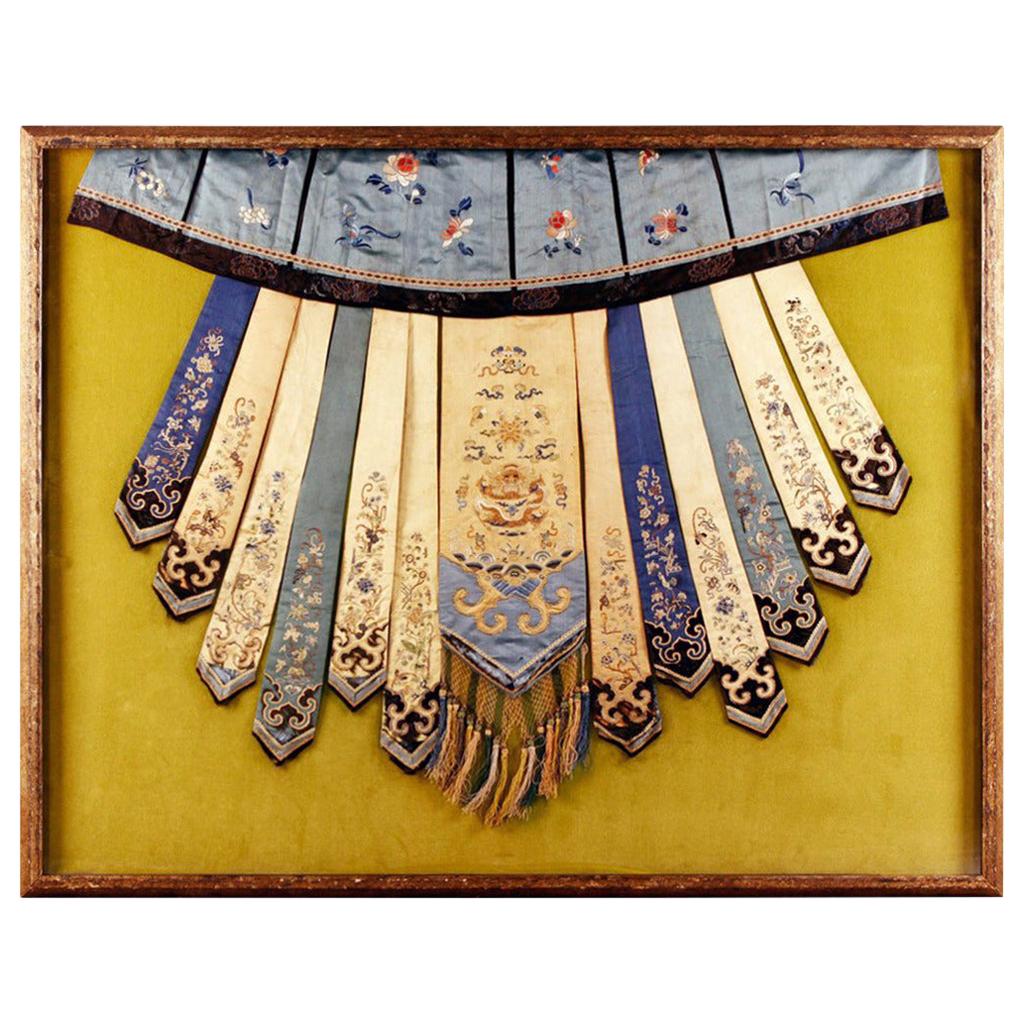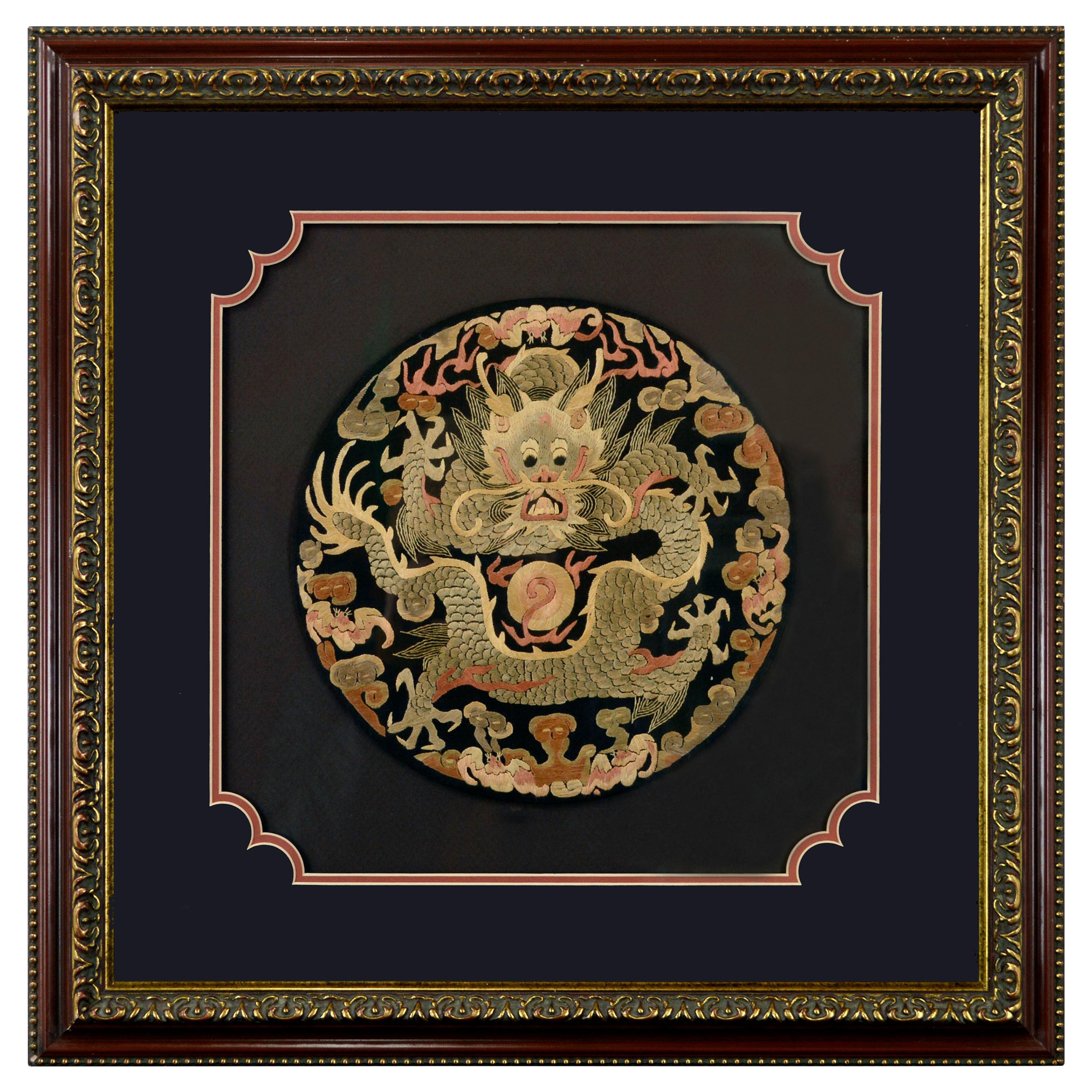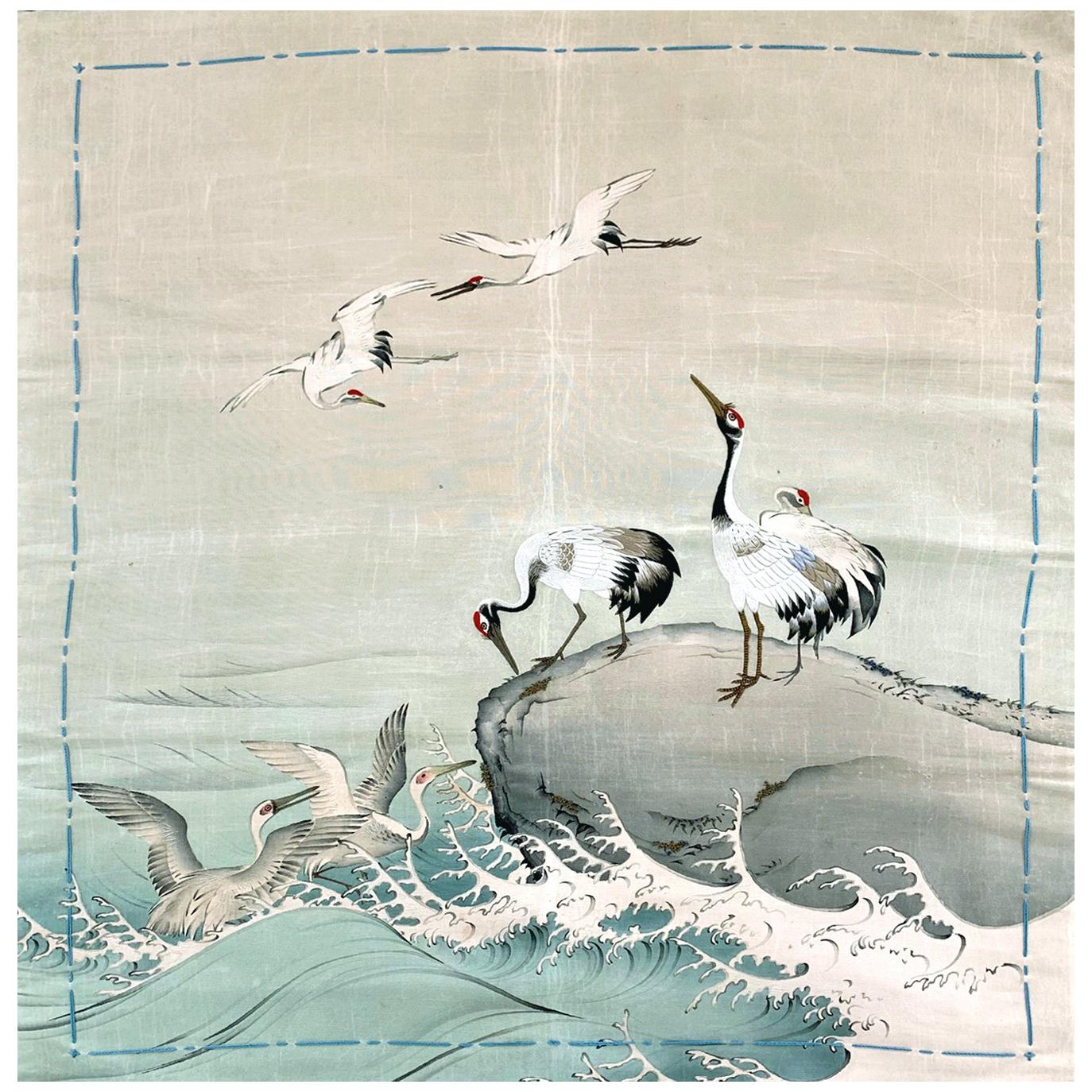Items Similar to Pair of Framed Japanese Embroidery Art Portraits
Want more images or videos?
Request additional images or videos from the seller
1 of 18
Pair of Framed Japanese Embroidery Art Portraits
About the Item
Artistically framed for display in a slight shadow frame with non-reflective pixie glass, these pair of embroidery art panels from Japan are dated circa 1910-1930s, end of Meiji to early Taisho period. This period was the peak of the Japanese oversea expositions, when all things Japonisme took Europe and America by storm and left long-lasting impact on western art and design. The influence, however, was clearly not one-directional; As when Japanese artists, artisans and dealers experienced western art, it in turn inspired and impacted on the aesthetics of the Japanese art made for the western tastes. An interesting crop of art forms quickly emerged with a particular outlook that bridged the east and west, with the fundamental techniques still rooted in Japanese traditions. These rare hyper-realistic embroidered portraits were such an example. They took the essential format of the western portrait that permeated the Victoria and Edwardian Society, but substituted with exotic Japanese subjects and executed in traditional embroidery techniques which had been perfected for centuries by the natives.
The two portraits on offer, one an elder man with long white beards and a pair of round spectacles lighting a pipe, and the other a grinning man with a peasant attire, were both set in black background, stimulating an appearance of Classic western oil painting or perhaps even the photograph. The fine stiches were maneuvered into an impressively hyper-realistic imagery that was far removed from the traditional Japanese embroidery work. They were made specifically for the export market, and it was recorded that they were very popular among the western collectors. They are both signed in a squared Japanese kanji character "Nao" by the artist. The delicate work was done on very think black gauze like silk and then back with a layer of thick paper. Displayed in matching wood frames in antique silver and gold finish with non-reflective glass.
Dimensions: Sight 16" x 12", with frame 20.6" x 16.6".
For literature and a pair of similar realistic embroidered portraits, see page 93 of Re-envisioning Japan Meiji Fine Arts Textile by John E. Vollmer.
- Dimensions:Height: 20.6 in (52.33 cm)Width: 16.6 in (42.17 cm)Depth: 2 in (5.08 cm)
- Sold As:Set of 2
- Style:Japonisme (Of the Period)
- Materials and Techniques:
- Place of Origin:
- Period:
- Date of Manufacture:1910s-1930s
- Condition:Wear consistent with age and use. The textile has been professionally cleaned and conserved. Subtle small areas of color unevenness in the black background on the one with the peasant.
- Seller Location:Atlanta, GA
- Reference Number:1stDibs: LU945023427082
About the Seller
5.0
Platinum Seller
These expertly vetted sellers are 1stDibs' most experienced sellers and are rated highest by our customers.
Established in 2006
1stDibs seller since 2010
485 sales on 1stDibs
Typical response time: <1 hour
- ShippingRetrieving quote...Ships From: Atlanta, GA
- Return PolicyA return for this item may be initiated within 2 days of delivery.
More From This SellerView All
- Vintage Japanese Ceremonial Wedding Kimono with Embroidery DesignsLocated in Atlanta, GAA large Japanese Wedding Kimono with bold embroidery designs. The auspicious attire was known as Uchikake and was worn by the bride during the wedding ceremony made from silk and hea...Category
Early 20th Century Japanese Japonisme Textiles
MaterialsBrocade, Silk
- Framed Japanese Relief Embroidery Textile Art of DragonLocated in Atlanta, GAA beautiful Japanese textile art panel with an embroidered dragon on a swirling cloud background, nicely framed with a linen matt in an antique-fi...Category
Antique 1890s Japanese Japonisme Textiles
MaterialsSilk, Wood
- Collection of Five Japanese Oshi-E Textile Art Panels Meiji PeriodLocated in Atlanta, GAOn offer is a set of five Japanese textile art panels called Oshi-E circa Meiji Period (1868-1912). This usual set of panels depict various aspects of daily life in Edo time with beautiful details. Some of these panels are snapshots of the buzzling commercial activities at the marketplace, providing insight into the signages, architecture, costumes and how people interacted within a historical and pictorial context. Other panels depict daily leisure activities such as lounging in the park or visiting friends. The realistic rendering and attention to details are not short of "photographic" quality. From the signage of the shops to the motions and attires of the individual characters, from the hairstyle, small ornaments, down to the facial expression, were all recorded in great details. Each panel was signed with the artist's name Yukihana in Kanji with a red seal. These panels are unframed and await your custom touch (framing with inner gilt spacer and mat costs about 250-500 depending on the material chosen, see a framed example in the last picture of a single framed panel we have for sale). We offer them for sale individually, but it will be great for a collector to consider the whole set so that they can stay together. The Oshi-E (also known as kiritori zaiku) is a type of ornamental textile art dated back to the Muromachi period (1392-1573). It started among the elite aristocratic women in Kyoto before spreading wider in the Japanese society. Throughout Edo and Meiji period, Oshi-E were sometimes used to make offerings to the altars in the temple and in the late 19th century, it was exported to the west along with the other embroidery textile art. Oshi-E was made by using silk wadding to create a relief design. Various silk fabric swaps and sometimes wires and tassels, often recycled from older kimonos...Category
Antique 1890s Japanese Japonisme Textiles
MaterialsSilk, Giltwood
- Large Framed Antique Chinese Embroidery Skirt TextileLocated in Atlanta, GAOn offer is an attractive piece of textile of Chinese origin beautifully framed in a gilt and UV glass shadow box. Artistically displayed, the piece is the large apron portion of a traditional skirt...Category
Antique Late 19th Century Chinese Chinoiserie Decorative Art
MaterialsSilk
- Japanese Antique Fusuka Textile Art Meiji PeriodLocated in Atlanta, GAA Japanese silk Fukusa panel circa late 19th-early 20th century of Meiji Period. The front was beautifully decorated with Yuzen-zome, a labor intensive resist-dye technique invested by an artist monk Miyazaki Yuzensai (1654 -1736) of Edo period. The auspicious composition features a group of red-crown cranes, the symbol of longevity. Three of them perch on the rock by the ocean (East Sea) an two of them are in flight. Additionally, two egrets frolic in the wave. Yuzen dying was used extensively to showcase the amazing details such as the waves and the gradual coloring effect. Embroidery was used sparsely to highlight areas such as the legs of the crane to render it more dimensional details. The piece has a red silk backing and still retains four blue tassels on corners as well as decorative stitches along the edges. Fukusa is a traditional Japanese textile...Category
Early 20th Century Japanese Japonisme Textiles
MaterialsBrocade, Silk
- Japanese Antique Fukusa Textile Art Meiji PeriodLocated in Atlanta, GAA Japanese silk Fukusa panel circa late 19th-early 20th century of Meiji Period. The front was beautifully decorated with Yuzen-zome, a labor intensive resist-dye technique invested by an artist monk Miyazaki Yuzensai (1654 -1736) of Edo period. The front cover likely depicts a scene from the Tale of Genji, showing a nobleman and his servant pays a visit to a lady in a fenced thatch-roof house under a high peak. The details of blossom trees and pines, as well as the characters, and scenery with a gradual color are astounding. It is telling that the Yuzen dying was used such an mastery. The piece has a red silk backing and still retains two red tassels on the lower corners as well as decorative stitches along the edges. There is a patched design on the back likely a Mon symbol (family crest). Fukusa is a traditional Japanese textile...Category
Early 20th Century Japanese Japonisme Textiles
MaterialsSilk
You May Also Like
- Chinese Dragon, Framed Silk Textile Surcoat EmbroideryLocated in Soquel, CALate 19th century Chinese silk embroidery rank badge textile, with a finely detailed dragon along with other various symbols embro...Category
Antique 1890s Chinese Qing Textiles
MaterialsSilk
- Japanese Midcentury Ebroidered Silk Old Wise Man Drinking Sake PortraitLocated in Dayton, OHAstonishingly realistic midcentury Japanese embroidered Uchida silk stitched chinoiserie portrait of an old man in a hat, lifting a sake cup. Signed lower right. Translation: ?? is t...Category
Mid-20th Century Mid-Century Modern Textiles
MaterialsSilk
- Vintage Kimono Silk Brocade Japanese Ceremonial 1970Located in North Hollywood, CAA vintage Mid-Century ivory color silk brocade collectable Japanese ceremonial kimono. One of a kind. Fabulous museum quality ceremonial kimono in pure silk with intricate detailed h...Category
20th Century Japanese Japonisme Textiles
MaterialsSilk
- Vintage Kimono Red Silk Brocade Japanese Ceremonial Wedding DressLocated in North Hollywood, CAA vintage midcentury red color silk brocade collectable Japanese ceremonial wedding kimono. One of a kind handcrafted . Fabulous museum quality ceremonial piece in pure silk with ...Category
20th Century Japanese Japonisme Decorative Art
MaterialsSilk
- Vintage Japanese Ceremonial Kimono Gold Brocade with Flying CranesLocated in North Hollywood, CAA vintage Mid-Century ivory color silk brocade collectable Japanese ceremonial kimono. One of a kind hand crafted. Fabulous museum quality ceremonial piece in pure silk with intricat...Category
20th Century Japanese Japonisme Textiles
MaterialsSilk
- Silk Embroidery Suzani Bedspread, Vintage Asian Wall Hanging, TapestryLocated in Philadelphia, PASuzani, a Central Asian term for a specific type of needlework, is also the broader name for the hugely popular decorative pieces of textile that feature this needlework in vivid col...Category
Late 20th Century Uzbek Suzani Textiles
MaterialsCotton, Silk
